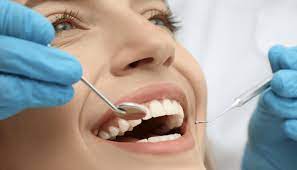Composite bonding is a fast and effective cosmetic dental solution used to enhance the appearance of teeth by correcting minor imperfections such as chips, gaps, or discoloration. This non-invasive treatment uses a tooth-colored resin material that blends seamlessly with your natural teeth, restoring symmetry and brightness to your smile. In this guide, we’ll break down everything you need to know about Composite Bonding in Dubai—its benefits, procedure, and cost—so you can decide if it’s the right choice for your dental needs.
What Happens During the Composite Bonding Procedure?
The composite bonding process is minimally invasive and typically completed in just one visit, making it one of the most convenient cosmetic treatments available. Your dentist will begin by choosing a resin color that closely matches the shade of your existing teeth to ensure a natural appearance.
Here’s what you can expect:
- Tooth preparation by lightly roughening the surface
- Application of a conditioning liquid to aid bonding
- Molding of the composite resin directly onto the tooth
- Hardening the material using a special curing light
- Final shaping and polishing for a smooth finish
The entire procedure takes about 30 to 60 minutes per tooth, with immediate results and no downtime afterward.
Key Benefits of Composite Bonding:
Composite bonding offers a range of advantages, especially for patients looking for a quick and affordable way to fix minor dental flaws. It is widely chosen for its simplicity, comfort, and natural-looking results.
Benefits of composite bonding include:
- Painless and requires no drilling or injections
- Preserves natural tooth structure
- Completed in a single appointment
- Color-matched to your natural teeth
- Lower cost compared to veneers or crowns
- Reversible and easily adjustable
This makes it an ideal choice for patients who want to improve their smile without committing to permanent alterations.
Common Uses of Composite Bonding:
Composite bonding is incredibly versatile and can address various aesthetic issues. While it’s primarily a cosmetic treatment, it can also serve some functional purposes when applied correctly by a skilled dentist.
Composite bonding is commonly used for:
- Repairing chipped or cracked teeth
- Closing small gaps between teeth
- Improving the shape of uneven or short teeth
- Covering stained or discolored areas
- Protecting exposed roots from gum recession
Because the material is sculpted directly on the tooth, your dentist can customize the shape and appearance with great precision.
How Much Does Composite Bonding Cost?
The cost of composite bonding varies depending on several factors, such as the number of teeth being treated and the experience of the dentist. On average, the cost making it significantly more affordable than other cosmetic options like porcelain veneers.
Factors that affect the cost include:
- Geographic location and clinic fees
- Number of teeth requiring treatment
- Complexity of the case (chips vs reshaping)
- Whether it's for cosmetic or structural purposes
While insurance may not cover cosmetic bonding, some cases involving damage or decay may be partially reimbursed. Always consult your dental provider to understand your specific coverage.
Caring for Your Bonded Teeth:
After undergoing Composite Bonding, proper oral care is essential to maintain the results and extend the longevity of the treatment. Though durable, the resin material is not as strong as natural enamel or porcelain, so it requires mindful habits.
To care for your bonded teeth:
- Brush twice daily and floss regularly
- Avoid hard foods like ice or hard candy
- Limit stain-causing foods and drinks like coffee, tea, and red wine
- Don’t use your teeth as tools (e.g., opening packages)
- Schedule regular dental cleanings and checkups
With good care, composite bonding can last between 3 to 7 years, and it can be touched up or repaired as needed during routine dental visits.





Comments